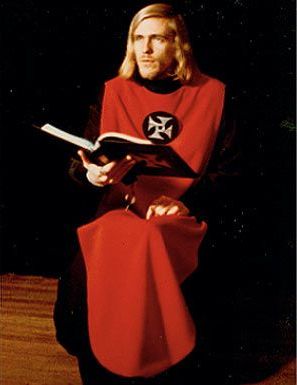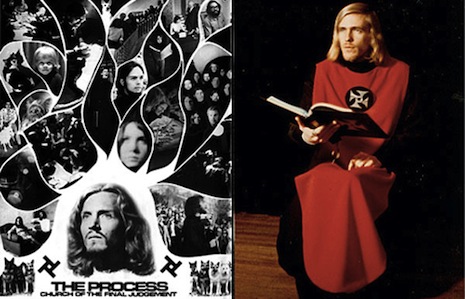


Blighton died and de Grimston was ousted as Teacher of the Process in 1974. The Process was founded in 1966 by ex-Scientologists Mary Ann MacLean and Robert de Grimston, and the Holy Order of MANS (HOOM) was founded in 1966 by Rosicrucian Earl Blighton, who was interested in many esoteric traditions. In other words, members of both groups decided to adopt a more mainstream identity, rendering their original deviant identity defunct. My other cases are the Process Church of the Final Judgment and the Holy Order of MANS, esoteric religions founded by charismatic leaders in the 1960s that ceased to exist decades later due to shifts in beliefs and affiliation. In fact, the unfamiliar (and generally unpopular) beliefs and practices of these fringe groups are now accessible and plausible to a far greater audience than either group (each with around 40 members) reached during its active years. Yet the web archives make it possible for interested parties to learn a great deal about both groups, and to keep their ideas alive. Both religions are defunct a seeker cannot ‘join’ today. In one case, the digital realm means that extensive archives of defunct religious groups are available (for example, Kerista, a sexually-experimental intentional community founded by Jud Presmont that disbanded in 1991 and the UFO religion Heaven’s Gate, founded by Marshall Herff Applewhite and Bonnie Lu Nettles, which ended with the mass suicide of 39 members in 1997). My focus is on the difficulty of identifying the moment of “death” for a new religion.

The project covers from the ancient work to the present, and includes all types of “religion”. Lewis (Tromso) and Michael Stausberg (Bergen). From June 2018 to June 2019 I am taking part in a large project, “The Demise of Religions” hosted by the Centre for Advanced Studies (CAS) at the Norwegian Academy of Science and Letters, led by James R. Until recently scholars were not interested in how religions end.

New Religious Movements (NRMs) became the subject of field research in the 1960s, and participant observers studied them in terms of factors that caused them to emerge and become established (charismatic leaders, counter-cultural contexts, hallucinogenic experiences, communal living etc). Consideration is given to the status of the Process as a defunct religion whose ex-members and interested outsiders ‘curate’ online archives of Process materials, keeping the ideas ‘alive’ and available for revival, despite the defunct status of the original organisation. This study builds on new scholarship to argue that the Process came to an end through activities of transformation and replacement. Until recently little attention was paid to how new religious movements (NRMs) came to an end the academic focus was overwhelmingly on the origin or beginnings of such groups. The Process later morphed into the Best Friends Animal Society in Kanab, Utah, abandoning its ‘deviant’ identity in favour of an animal rights-based new identity. De Grimston was expelled from the religion in 1974, after which date it transformed into The Foundation Faith of God under MacLean’s leadership. The Process developed a theology melding esoteric Biblical motifs with psychoanalysis. The Process Church of the Final Judgment was founded in 1966 in the United Kingdom by Mary Ann MacLean and Robert de Grimston. This article examines an esoteric religion founded by charismatic leaders in the mid-1960s that ceased to exist several decades later due to changes in belief and affiliation members adopted another, more mainstream, identity, rendering the original religion, which was perceived as deviant in doctrine and practices, futile.


 0 kommentar(er)
0 kommentar(er)
